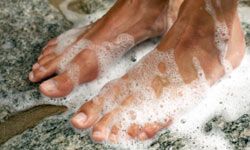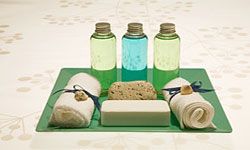Washing the grit and grime of the day away is a simple enough task; the hard part is picking a cleanser from the scores lining store shelves. From soap on a rope to nubby beauty bars and everything imaginable in between, it's easy to feel overwhelmed and a bit perplexed by the vast amount of soap for sale. Plus, so many manufacturers are vying for your soap bar bucks and competing to convince you that their soap is supreme to all others.
If you're wondering where to start, you should also know that there are other options for cleansing products range besides soap -- you can also choose to go with a non-soap cleanser. Depending on your skin type, both kinds should get you clean. It's the specific set of ingredients in each kind, however, that set them apart. Basically, for a cleanser to be considered a soap, it has to be made of fats and oils, or fatty acids [source: Draelos]. Non-soap cleansers, also called synthetic detergents, or syndets for short, consist either partially or entirely of synthetic ingredients instead [source: The Soap and Detergent Association, Oakley].
Advertisement
Because both soap and non-soap will get you clean, if you want to figure out which is the best for your skin type, you should know how the chemistry of how each works. To learn more about these super suds, read on.


